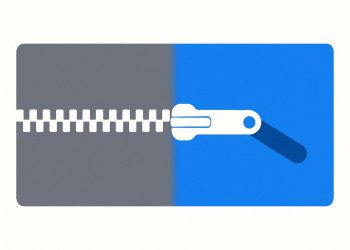Agentic AI is reshaping modern marketing, enabling software to plan, decide, and act with significant autonomy. This evolution from simple task automation to goal-seeking AI agents was recently highlighted by Scott Brinker of chiefmartec.com. Marketers are now using these systems to qualify leads, craft dynamic messages, and manage budgets in real time, driving faster growth with leaner, more strategic teams.
Why agentic AI matters in 2025
Agentic AI matters because it moves beyond predefined rules to make autonomous, context-aware decisions at a massive scale. By combining large language models with orchestration tools, these systems can trigger applications, adapt to user behavior, and optimize campaigns in real time, a capability human teams cannot replicate.
This rapid adoption is fueled by technology that merges large language models with orchestration layers, enabling AI to trigger downstream applications independently. Deloitte predicts that by 2025, a quarter of all companies with generative AI pilots will advance to agentic AI. In B2B marketing, 64% of teams already leverage AI for lead qualification, drastically reducing wasted outreach as noted in the Landbase pipeline study. These systems excel by adapting to context; for example, an agent can instantly decide whether to send a demo invite or adjust an in-app offer based on a user browsing a pricing page. Such micro-decisions happen thousands of times per hour – a scale impossible for human teams to manage.
Core marketing use cases
- Autonomous lead scoring and routing
- Real-time content personalization across channels
- On-the-fly budget reallocation based on performance signals
- Continuous competitive research summarization
- Automatic A/B test generation and pruning
The practical impact is significant. One retail brand increased email open rates by 38% by using agents to rewrite subject lines in real time, as reported in Total Retail. Looking ahead, Cisco projects that AI agents will handle 68% of all customer service interactions by 2028, freeing up significant budget for strategic innovation.
Skill shifts and team design
This technological shift is redefining marketing roles. As routine execution tasks become automated, demand is surging for strategic skills like creativity, AI oversight, and data interpretation. Salesforce identifies AI literacy and ethical governance as critical competencies for marketers in 2025. By 2028, IDC predicts one-fifth of marketing roles will be ‘AI workers,’ forcing managers to lead blended human-AI teams. In response, companies are creating in-house training, prompt libraries, and new roles like ‘AI Campaign Conductor.’ Early adopters are already seeing higher conversion rates and shorter campaign cycles, a key takeaway from the recent MarTech Conference.
Integration tips from the martech stack
To integrate agentic AI, Scott Brinker recommends a phased approach. Start by embedding a simple research agent within your existing analytics platform. Next, layer on a campaign agent that can propose experiments and push approved changes to ad platforms. Essential guardrails include implementing role-based access, maintaining transparent action logs, and conducting periodic human audits. Fortunately, many martech vendors now bundle these controls, making adoption easier for mid-market companies.
The market growth reflects this transformation. Industry analysts forecast the global AI agent market will surge from $3.66 billion in 2023 to an estimated $139 billion by 2033. Financial services, retail, and SaaS marketing are leading the adoption curve, fundamentally reshaping the competitive landscape in their respective sectors.
What exactly is agentic AI and how is it different from the chatbots and automation we already use?
Agentic AI is goal-driven software that acts without waiting for your next prompt.
Instead of following fixed rules or answering questions, it:
- Plans multi-step workflows
- Chooses the best martech tools for each job
- Learns from outcomes and re-routes budgets in real time
In 2025, 25% of companies already run pilot agents that decide when to send email, spin up a paid-social micro-campaign, or flag a lead for human review all on their own.
Early teams report up to 38% higher email open rates because the agent continuously A/B-tests subject lines, send-time and segment mix without a marketer touching the dials.
Which everyday marketing tasks are agents taking over first?
The low-hanging fruit is anything rule-based, repeatable and data-heavy:
| Task | Share now handled mostly by agents |
|---|---|
| Lead qualification & scoring | 64% of B2B orgs |
| Weekly campaign reporting | 55% |
| Subject-line optimisation | 47% |
| Budget re-allocation across channels | 31% |
Sales teams using agents for lead triage cut 22% of junk-opportunity calls in Q1 2025 alone.
The agent screens form fills, enriches firmographics, and only hands over warm, ICP-aligned leads with a suggested talk-track.
How will agentic AI change the mix of people on a marketing team?
IDC predicts that 1 in 5 “marketing seats” will be filled by an AI agent by 2028.
This does not mean one-fifth of humans lose their jobs; it means the human job description flips:
- Less time on: list pulls, pacing sheets, copy tweaks
- More time on: brand storytelling, ethical oversight, cross-team diplomacy
Forward-thinking CMOs are already hiring AI wranglers – part data scientist, part prompt engineer – who train, audit and referee the agents.
Salaries for these hybrid roles rose 18% faster than conventional marketing-manager postings last year.
What new risks come with letting agents run campaigns unattended?
- Brand-safety drift: an agent eager to lift click-through rates might over-personalise and leak sensitive data.
- Tool-sprawl tax: each agent needs API keys, access rights and budget caps; without governance, martech spend can balloon 12-30%.
- Compliance fog: agents cross borders in milliseconds; GDPR, CPRA and cookie-rules still require a human sign-off log.
Adobe’s 2025 Digital Experience panel recommends a “human-in-the-loop” ledger: every creative, bid change or data purchase above a set dollar or reputation threshold is queued for quick approval.
How should a 2025 marketing team start experimenting without blowing the budget?
Follow the three-week crawl-walk-run model many B2B firms piloted this year:
Week 1 – Crawl
Pick one pain-point (e.g., MQL follow-up). Deploy an off-the-shelf agent that only writes and sends emails. Measure open-reply conversion.
Week 2-3 – Walk
Let the agent decide wait-time and channel rotation (email → LinkedIn → call task). Cap daily touches and budget. Review daily; reward or prune behaviour.
Month 2 – Run
Connect the agent to your CRM and ad platform so it can create look-alike audiences and shift $500/week budget autonomously. Lock in a “circuit breaker” – if CPA > target 20% two days straight, agent pauses and pings you.
Teams that followed this playbook doubled qualified pipeline with the same headcount and trimmed 9-14% in execution costs within 90 days, according to Landbase benchmark data.



















